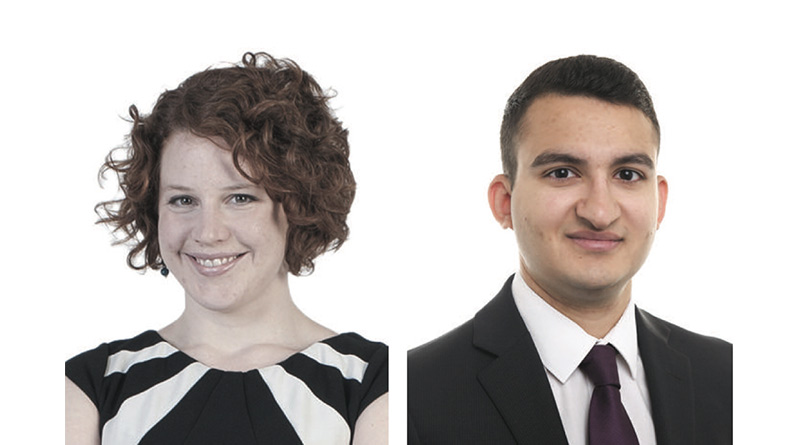Healthcare and Hospitality in a Pandemic
by Lizzie Pillinger, Senior Associate and Samir Nathwani, Senior Associate, Trowers & Hamlins LLP (www.trowers.com)
Healthcare and hospitality have been two of the sectors hardest hit by the COVID-19 pandemic. Staff and businesses have demonstrated remarkable flexibility and resilience and the synergies between the sectors have provided ample opportunities for those willing to seek them out. As we look towards a loosening of restrictions, we take a moment to reflect on the ways in which these sectors have adapted to the challenges of the past year and what lessons can be learned.
It’s clear that Covid-19 is a game changer for the hospitality sector. The immediate impact has been closure of restaurants and hotels and some operators who were already struggling have not been able to recoup costs and have been forced into financial difficulty, in some cases into liquidation. In the medium term, a huge creative effort is being mobilized to open outlets under restrictions and to make the transition period between lockdown and normality – for however long this lasts – work for operators. We had already seen a colossal increase in the amount of takeaways being demanded (predominately driven by app-based operators such as Deliveroo and Uber Eats) and new technology / the restrictions on outdoor dining have only increased this demand. In the long term, the question becomes: what is going to change for good?
Elderly care has been hit with the double challenge of continuing to care for some of the most vulnerable to the pandemic’s effects on health whilst at the same time seeing increased demand for its services. That may be because people are unable to care for themselves at home, hospitals are needing to discharge patients to cope with increased bed demand or that people are being faced with the reality of social isolation and looking at a different way of living. That demand is particularly clear in extra-care settings which allow people, who may otherwise have been living in isolation, to become part of a community. Even if they are isolating, they need not be isolated and can benefit from the efforts of operators to keep residents connected through initiatives such as “virtual villages”, hot food deliveries and creating safe spaces for social interaction to take place. This is to say nothing of the challenges of staff shortages, illness and death, lack of PPE, funding shortfalls and constantly changing guidance.
Whilst both the hospitality and care sectors each face their own challenges based on, for example, very different funding models and customer demand patterns, they are both at their very core people-centred businesses where the focus is on caring for people and making them feel comfortable. Those who have spotted the synergies and similarities have been able to use these to their advantage.
We’ve seen so-called “Covid hotels” where the availability of self-contained living spaces has provided the background to shelter those who otherwise may not be able to (including, in many cases, care workers themselves).
Hospitality workers, so many of whom have been furloughed or made redundant, have skills covering customer service, cleaning, catering, entertainment and are used to the challenges of customer-facing roles. Applying these skills in the healthcare sector is a no-brainer – these are exactly the sorts of skills required. For those without healthcare experience, there is the option of taking up back-of-house roles to free up trained carers to provide the much needed care services. Cairn Group (which operates both hotels and care homes) has been protecting its employees by offering a buddy scheme doing just this.
We’ve seen how creative solutions can be applied to buildings to adapt them to the needs of a particular moment. But they will only real- ly come into their own when they are designed with this flexibility in mind. Companies like Motionspot are making hotel rooms truly accessible without compromising on design and aesthetics that their guests enjoy. Items such as concealed ceiling hoists mean a room can be used equally by a person without complex needs. Not only does this make the buildings more flexible in exceptional times but there is evidence that it can increase revenue in the usual course of business. Those whose needs are met (and surely we all want to get out and travel as soon as we can?) may be more likely to return. In a care home setting, building with safe visitor spaces (screened spaces with speech enhancing technology and separate entrances), increased ventilation and consideration to how staff, residents and visitors circulate through communal areas is likely to help to improve infection control as well as making spaces feel lighter and more comfortable.
It has been shown time and again that younger generations are likely to have several careers in their lifetime. Given the synergies in skill sets between workers in the hospitality and leisure sector and those in the care sector, those looking to fill gaps might do well to consider recruit- ing from such areas, or even to offer schemes such as Cairn Group’s “buddy schemes” in times where demand is low in one sector and high in another.
As the hospitality sector starts to reopen with restrictions lifted for people to sit indoors, only time will tell if those that have used their skills in the care sector choose to remain or return to their previous roles. What is clear though is that the reopening of our hospitality industry will be a welcomed time for everybody across the industry.

